RUNNING THE SIDELINES OF HISTORY: BEING A BALLPERSON AT THE US OPEN
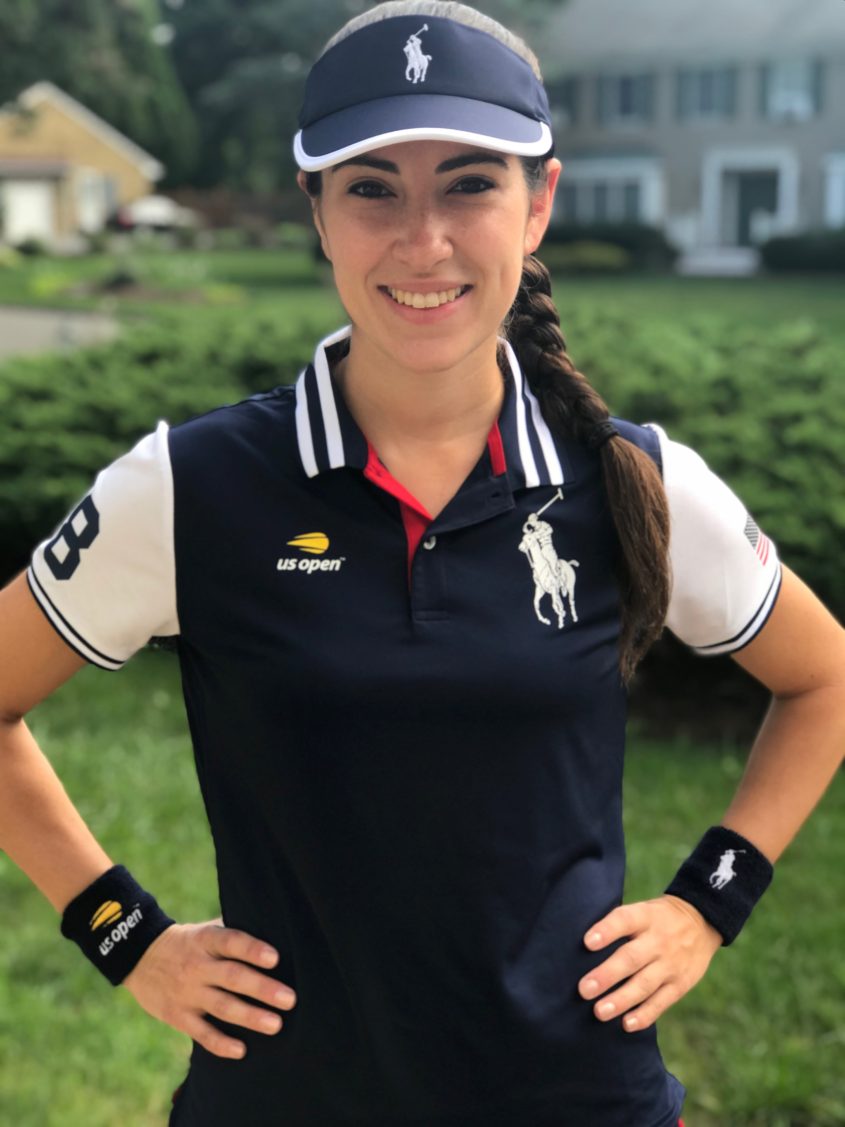
If you’ve ever wondered what it’s like to be a ballperson at the US Open Tennis Championships, I got you covered. Watching tennis growing up, I always dreamed of how cool it would be to be a ballperson, but I never imagined the opportunity would become a reality. When I stumbled upon the open tryout application this past summer I thought, “this would be too good to be true.” It was the day before tryouts and I hadn’t practiced, but I knew I had to go; I had nothing to lose. I found out I was selected nearly one full month after the day I registered for tryouts. Reading the acceptance email was surreal; I couldn’t believe it.
Here’s an inside look at my experience (tighten your tennis shoes, it’s a long one).
TRYOUTS & CALLBACKS
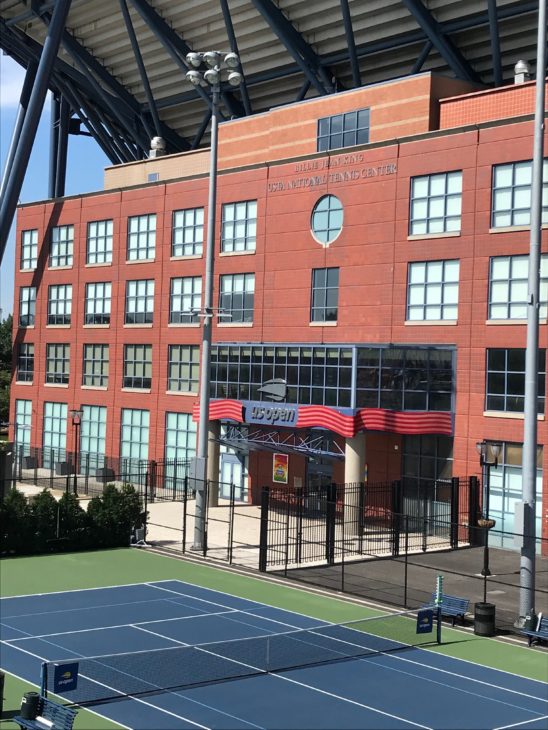
Tryouts were held at the USTA Billie Jean King National Tennis Center (where the US Open is played). There were more than 400 hopefuls ready to show the ballperson staff that they had what it takes to be a US Open ballperson. The tryout was designed to test our skills in retrieving, catching, and rolling the ball. I had such mixed feelings about my tryout. It went by so quickly and I felt like I could have done better, but I was still glad I gave it a shot.
An email regarding callbacks arrived less than two weeks later. I was so excited to have another opportunity to present my skills and hopefully be selected to join the ballperson team. With nearly three days to practice, I knew I had to hit the court. My boyfriend helped me run drills and gave me pointers. Rep after rep after rep; I didn’t want to stop until I was 100% confident.
My callback was fun because it felt more like a practice. After running through the same drill we did at tryouts, we took positions on the court and practiced working a match. As two staff members hit the ball back and forth, occasionally missing on purpose and dictating where the ball would land, we were judged on our knowledge of the game, positioning, and of course handling the tennis ball.
I found out I was selected 12 days later. This incredible journey was about to begin!
THE OPEN
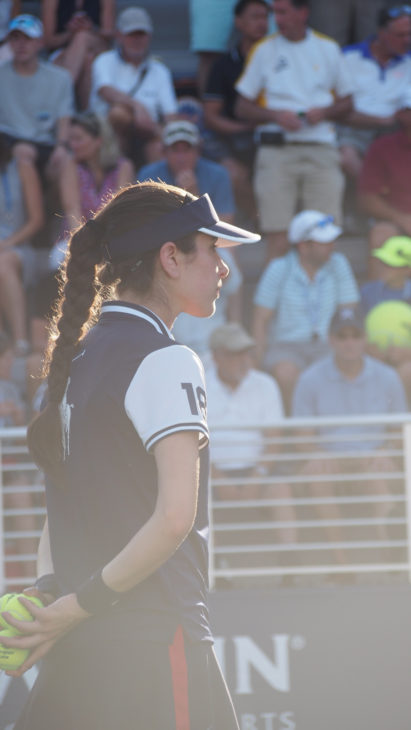
There’s a lot more to the US Open than the top singles matches that are shown on primetime TV. The 18-day* event starts out with four days of qualifying rounds. Yes, many players compete to qualify for the main draw. This is the time for all the rookie ballpeople (me), to get out all their jitters before the main draw starts.
The main draw kicks off with men’s and women’s singles and continues with men’s, women’s, and mixed doubles.
But wait, there’s more – the junior tournament. Qualifying rounds for junior boys and girls start on the fifth day of the main draw. After two rounds, the junior brackets are set and competition for the title begins. By the time junior boys and girls doubles start, mixed doubles are already in the quarterfinals.
But wait, there’s even more – the wheelchair and wheelchair quad tournament. Wheelchair men’s and women’s singles and doubles start on the 11th day of the main draw. At this point, the men’s and women’s doubles and women’s singles are competing in the semi-finals.
*Based on the 2018 US Open schedule.
FIRST MATCH
My first official day stepping out on the court as a US Open ballperson was Tuesday, August 21st. After enduring countless hours of training, I felt ready; but even still, I didn’t know exactly what to expect. How could I? Every match and every player are different. The first match I worked was round 1 of the women’s qualifiers on Court 12: Saisai Zheng (CHN) vs. Jil Teichmann (SUI). It was a blast!
THE CREW
A crew is the term used for the group of ballpeople who work a court together. It’s generally made up of six to eight rookies and veterans, with one vet serving as Crew Chief. The Crew Chief is responsible for the crew and is someone everyone can rely on for support and direction. The US Open ballperson staff decides crew and court assignments. Crews only stay on court for about two hours at a time.
Two different positions fill the six spots on the court – two nets and four backs. Nets are responsible for retrieving dead balls at the net and rolling them to the appropriate side. Backs are responsible for catching dead balls behind the baseline, tossing a couple of balls to the player before their serve, and presenting their towel when prompted. Some ballpeople are considered “swings” which means they have the skills to perform at the back and net positions.
If a crew has more than six people, the additional ballpeople rotate in during a changeover. If a crew only has five people (it could happen), the total number of backs drops down to three.
I worked the back position (on towel side) for the majority of the tournament, but I did get a fair amount of opportunities as a net, as well. The positions are so different that it’s hard to choose which one I liked the most. The nets do more running back and forth and control where the six balls on the court are. The backs do a lot more standing and need to be as precise as possible when tossing the balls back and forth to each other and to the players.
THE RULES
One of the most amazing parts of this whole experience was learning so much more about the game of tennis. As a fan of the sport, I already knew the basics of scoring (love, 15, 30, 40 // games, sets, match), but I didn’t know the intricacies of when the players change sides, when new balls are put into play, and exactly how tiebreaks work. As a ballperson, you need to know all of this and be a step ahead of the current play. You need to know which player is serving so you can feed all the balls to their side and when the players are sitting down for a break so you can run in their towel, offer them water, and put up the umbrella. Most importantly, you need to know when it’s match point, because you’re not supposed to move when the last point is won (it’s really obvious if you do).
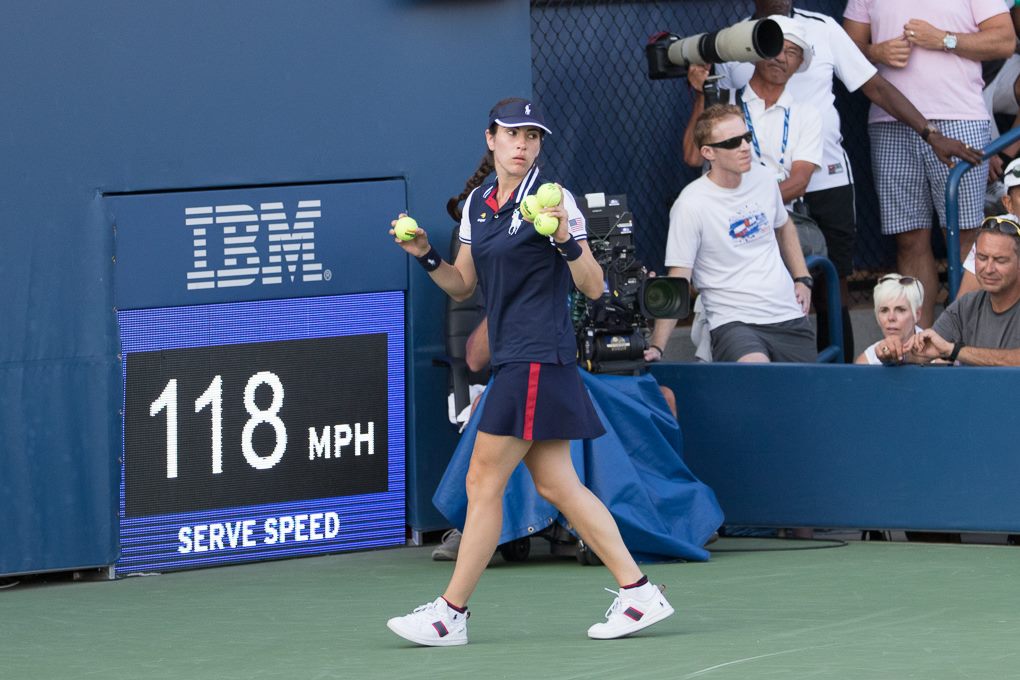
Just to make things a little bit more complicated, some rules are slightly different for men’s and women’s, and almost every type of match (singles, doubles, juniors, wheelchair). It’s a lot of information to take in, but I was proud of myself for picking it up pretty quickly.
That doesn’t mean I didn’t make mistakes; I’m not perfect. But with time, I learned that after making a mistake, the most important thing to do was quickly correct it and focus on the next point. There was no time to dwell on it or get upset.
ASHE
You know you made it as a US Open ballperson when you’ve worked Arthur Ashe Stadium (not the pit, the court). Arthur Ashe Stadium is the biggest and most prestigious court of the US Open. Only the top players get chosen to play there and all its matches are broadcast on TV. It’s almost unheard of for a rookie to work Ashe.
It was Monday, August 27th, the first day of the main draw. I was sitting in the ballperson lounge, listening to all the crews getting called out. I was expecting to hear my name closer to the beginning because the bigger courts and stadiums were always called last. After the 16th crew was called, there was only one left… Arthur Ashe Stadium.
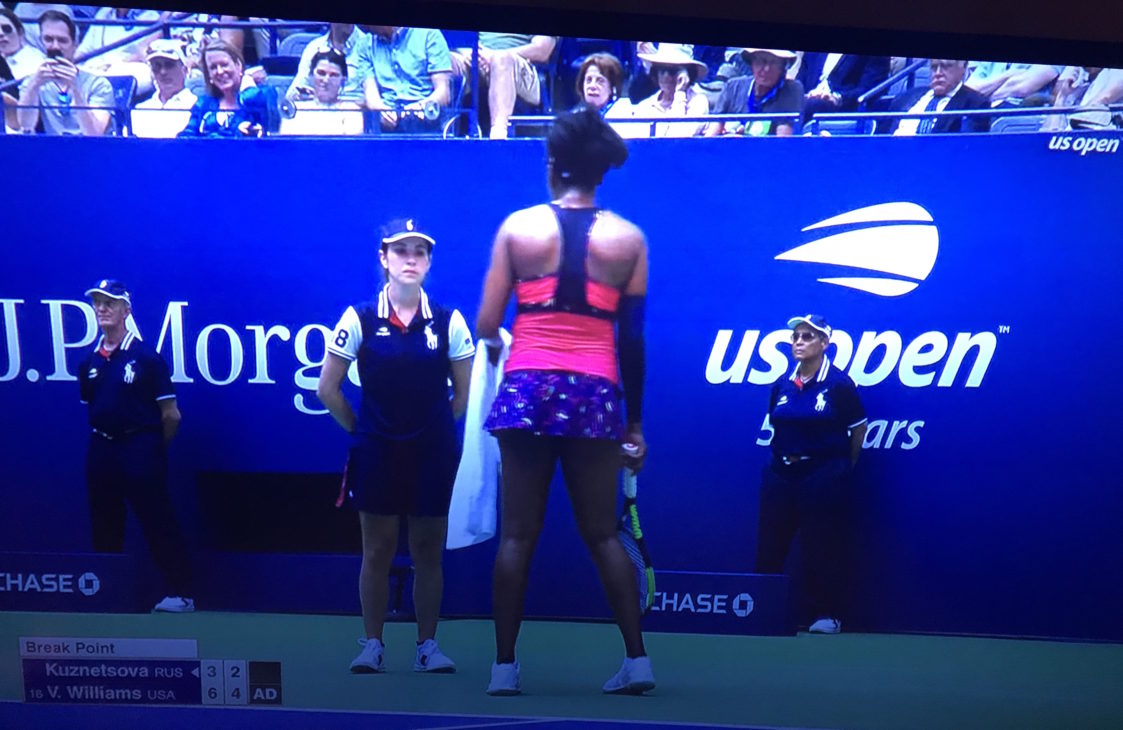
Could it be? Yes! My name was called, the only girl and rookie on the crew (is this real life?!). I was placed at the back position, on the towel side, which meant I would be getting a decent amount of TV time. The best part was that I’d be working Venus Williams’ match – the player I’ve been cheering on since I started watching tennis. I was ecstatic! I quickly texted my family and friends; I needed this match DVR’ed.
Walking on the court in Arthur Ashe Stadium was an incredible feeling. For one, it’s huge; looking up into the crowd makes you feel as small as a bug. The scoreboards are placed high, there’s always a buzz because of the crowd, and the sidelines are wider and longer. It was truly humbling (and a little nerve-wracking).

Venus was very down to business. She knew what she wanted, and she wanted it right away. And it worked. She defeated Svetlana Kuznetsova in an intense three set, first round match.
I am so thankful for this experience. Starting the tournament as a rookie, I had no expectations of being chosen to work the stadiums or bigger courts; I was just happy to be a ballperson. Being picked to work Ashe was incredible.
FINAL CEREMONIES
I had the exciting privilege to work all the main draw final ceremonies: men’s & women’s singles, men’s & women’s doubles, and mixed doubles. Standing right in the middle of the court holding a country flag behind the champions and runner-ups was a very proud moment.
The players I was excited to see in the finals were Novak Djokovic*, Juan Del Potro, Naomi Osaka*, Serena Williams, Mike Bryan*, Jack Sock*, Bethanie Mattek-Sands*, and Jamie Murray*.
The men’s & women’s singles final ceremonies felt more celebratory than the doubles’ ceremonies. Arthur Ashe Stadium was packed, photographers were fighting over the best shot, and streamers exploded when the champion was announced. I was lucky enough to be chosen to shoot off a streamer when Naomi Osaka won the women’s singles title – so cool!
*Won a 2018 US Open Championship title.
THE PLAYERS
Being on the court with some of the most famous tennis players in the world is amazing and intimidating at the same time. While it’s so cool to be up close to the action and be a part of history, it’s also interesting to see how each player competes.
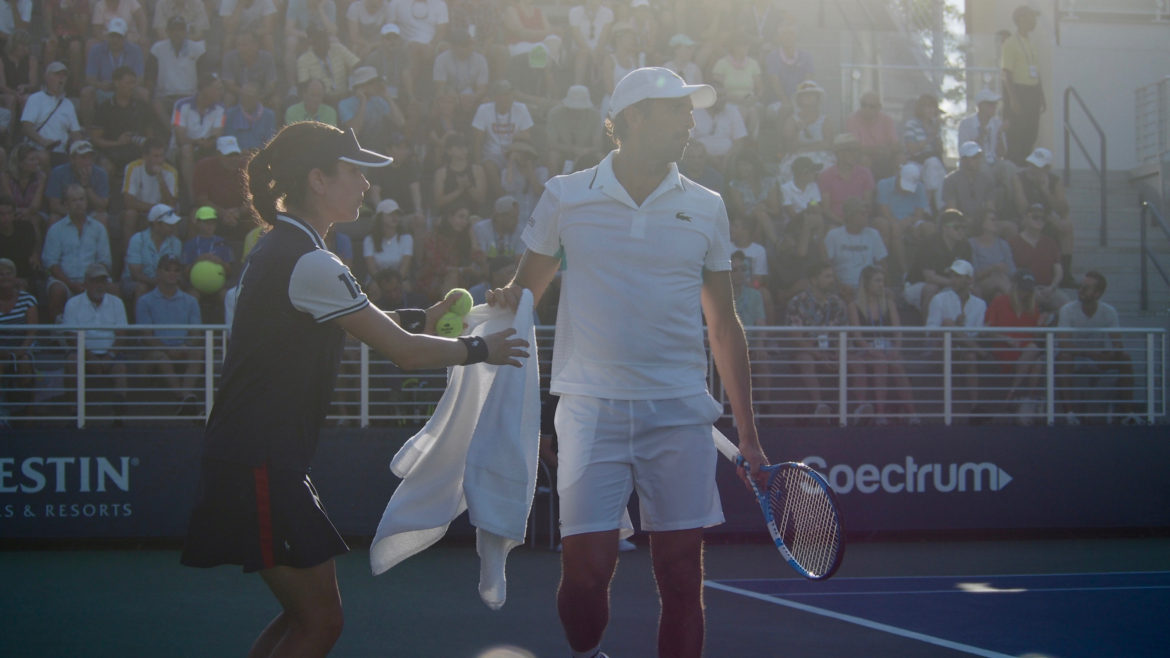
Every player wants the balls tossed a certain way and their towel at specific times during the match. Some players are so focused on winning that they almost expect the ballpeople to read their mind, while others are more outspoken with their appreciation.
It may seem like ballpeople are friends with the players at times, but there are actually strict rules that say we can’t speak to them (unless spoken to) or ask them for their autograph while in uniform.
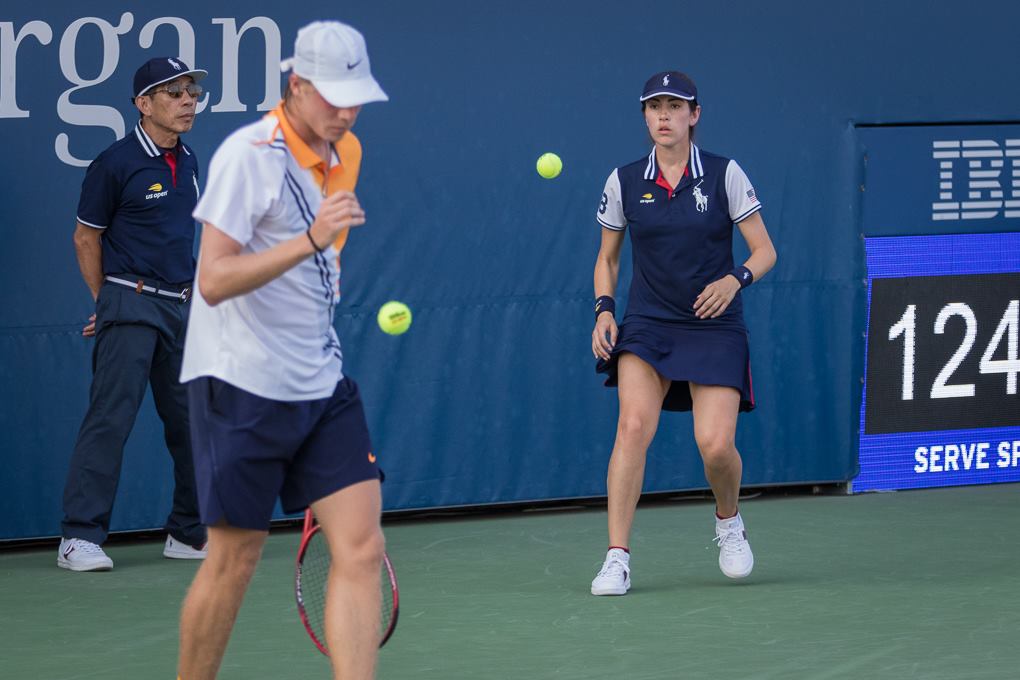
Believe it or not, I have a list of every match I’ve worked. The most notable players I worked for are Venus Williams, Marin Čilić, Milos Raonic, Jack Sock, Denis Shapovalov, Jeļena Ostapenko, Fabio Fognini, Marc López, Feliciano López, Sam Stosur, CoCo Vandeweghe, Ash Barty, Nicolas Mahut, and Denis Istomin.
THE PIT
The pit is where photographers sit to take photos of matches in Arthur Ashe Stadium. It’s essentially a room that is set lower than the court behind the blue walls (the square cutouts lead to the pit). The pit offers a different perspective on the match because of its angle. I sat in the pit during the round 4 match between Sloane Stephens and Elise Mertens. Every time a ball was hit into the pit, I found it as quickly as I could and reached through the cutout to give it to the ballperson on the court. Other than that, I got to enjoy the match!
THE STRINGER
The US Open has multiple stringers on site to string new racquets and fix used ones. Their workstation is located in Arthur Ashe stadium. Typically, each player places an order to get their racquets strung prior to a match or practice, but sometimes they want a racquet strung during a match. When that happens, a ballperson is responsible for getting the racquet to the stringer, wait about 10 minutes for it to be finished, and then run it back.

You need three things before leaving the court: the players name, their desired string tension, and your credential. Every player uses different racquets and strings and prefers different tension. For the most part, the stringers have information on every player, so it’s important to tell them the correct name and verify the tension the player requested. The player’s name also tells the stringer which sponsor logo to paint on the strings when it’s all done. And your credential is simply to gain access to Arthur Ashe Stadium.
Every time I had to bring a racquet to the stringer, I sprinted as fast as I could because I wanted to get the racquet back to the player as fast as possible and I knew my crew dropped down to only five people. But since there was nothing I could do while the stringers were working, I got to sit and watch them quickly turn the machine and change the strings.
THE CONDITIONS
Weather
The US Open starts in August and ends in September (the 2018 tournament dates were August 21st– September 9th). This is arguably the hottest time of the year. Standing on the court in the blazing sun was brutal at times. Sweat is dripping down places you wish it wouldn’t; you feel so dehydrated you want to jump in a pool; and your sunscreen is basically evaporating off your skin.

Yet, we’re still standing in position, feet wide and hands behind our back, as focused as ever. We’re sprinting and grabbing tennis balls as fast as we can, serving the players ice towels, water, and shading the sun with a large umbrella, all before helping ourselves – because we have a job to do and we can’t let the players down.
Other than heat delays during some junior matches, we experienced rain delays on uncovered courts, as well as lightening and storm delays.
Mind & Body
Being a ballperson is a lot of fun, but it’s also hard work.
Mentally, it’s stressful because there is so much going on in your mind at the same time. On the court, you’re focusing on the match (the current play, the score, what happens next), on the players (anticipating how many balls they want, if they need their towel), and on the other ballpeople (Who has the balls? Is everyone in the correct positions?). On the sideline, you’re focusing on the players – serving them water, Powerade, bananas, ice towels, etc. and shading them with an umbrella. And while all of this is going on, there’s a voice in your head saying, “don’t mess up.” There’s a lot of pressure when it comes to interacting with some of the best tennis players in the world.
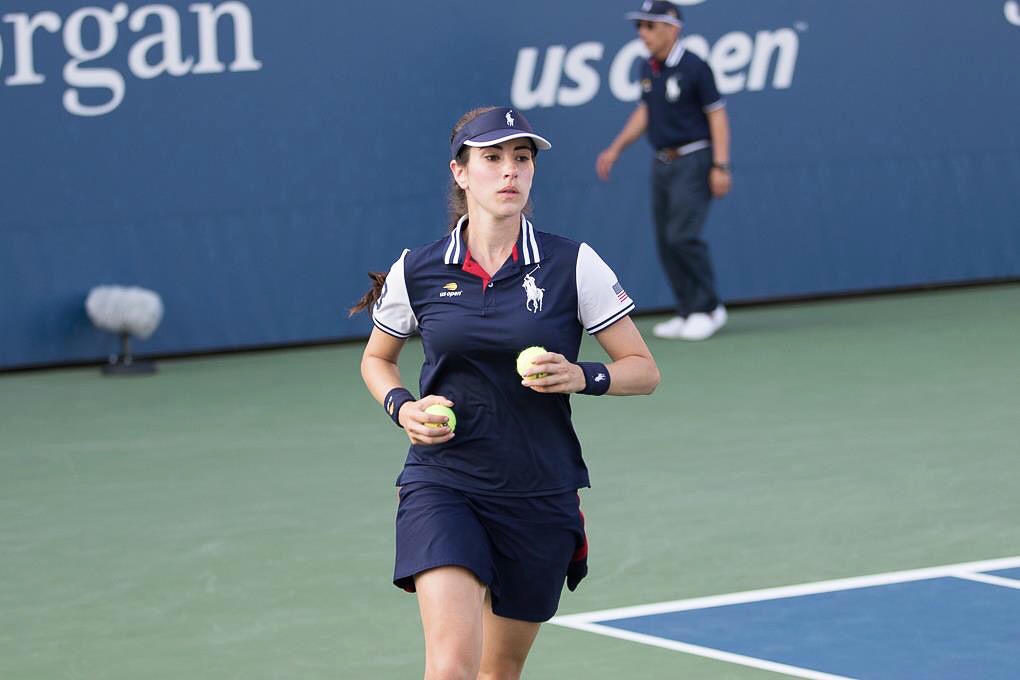
Physically, it’s a great workout. When you see a loose ball on the court, you’re expected to sprint full speed to pick it up, and then sprint even faster back to your position. The goal is to do this as seamless as possible without causing a delay to the match.
If you’re in the net position and need to kneel in front of cameras, say hello to a nice quad workout.
I felt the most strain in my feet. Standing for hours at a time every day for three full weeks in flat, but fashionable, sneakers, took a toll (think blisters on your toes, a slight relapse of plantar fasciitis, and sore heels).
The funny part about all of this is that while some stress and muscle soreness are present, so is adrenaline and when it’s your turn to retrieve a ball or towel, it’s pumping so fast that any discomfort instantly goes away.
THE ESSENTIALS
Lots and lots of water (and Powerade). It was super important to stay hydrated throughout the day, especially during the hottest days. We were fortunate enough to have access to a cold water fountain and a stocked Powerade fridge in the ballperson lounge. I carried my US Open water bottle with me everywhere I went.
Sunscreen. I applied sunscreen at the beginning of every shift and re-applied when necessary. If I missed a spot, it was obvious at the end of the day. I finished the tournament with a pretty nice tan, and white feet. I’m pretty sure my sock tan was still visible even months after.
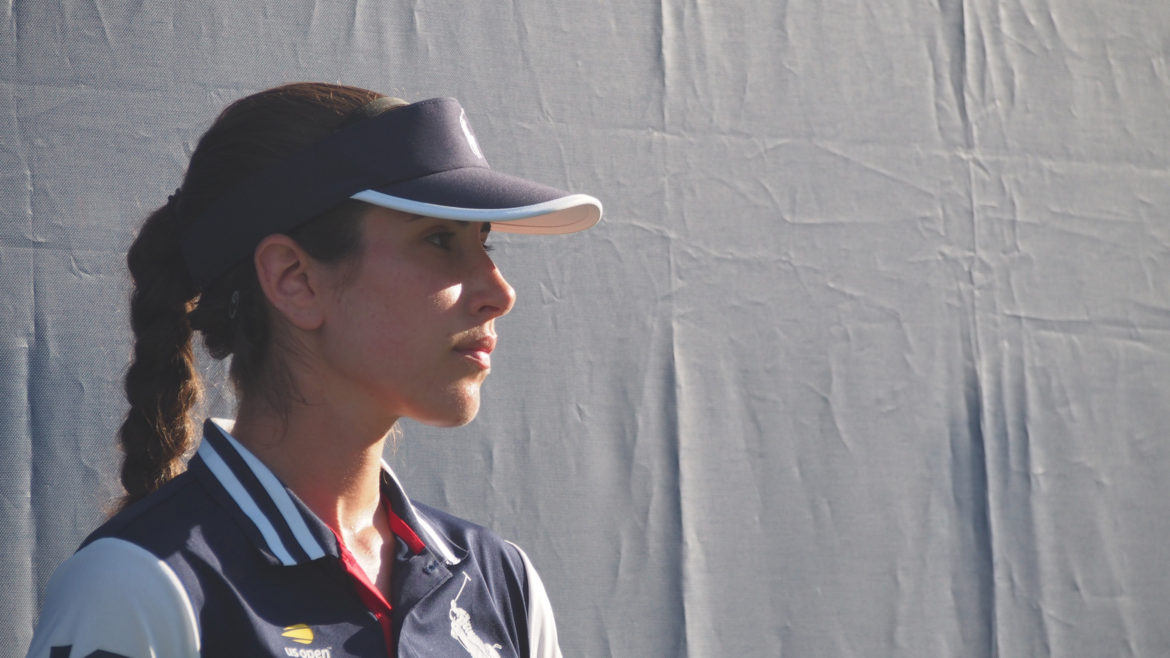
Visor. Wearing a visor on the court was a game-changer. I didn’t wear one at first because I was afraid it would block my peripheral vision, but after staring into the sun and squinting for two days, I decided to try it. Not only was I able to see better, I avoided sunburn on my face.
Hair in a ponytail braid. This was basically part of my uniform. This job requires so much focus and attention to detail, that I couldn’t let my hair get in the way.
Stretching. To avoid injuries, I stretched all throughout the day to make sure my muscles were loose and ready to take on hours of tennis (and I wasn’t even playing!).
UNIFORM & CREDENTIAL
Uniform
US Open ballpeople are walking advertisements of Polo Ralph Lauren (the official outfitter of the US Open), and I say this in the best way (no complaining here). Every piece of clothing sports the logo, which means we were commonly mistaken as a tour guide or worker from the on-site Polo Ralph Lauren store. But it also meant that we were wearing a pretty expensive outfit!
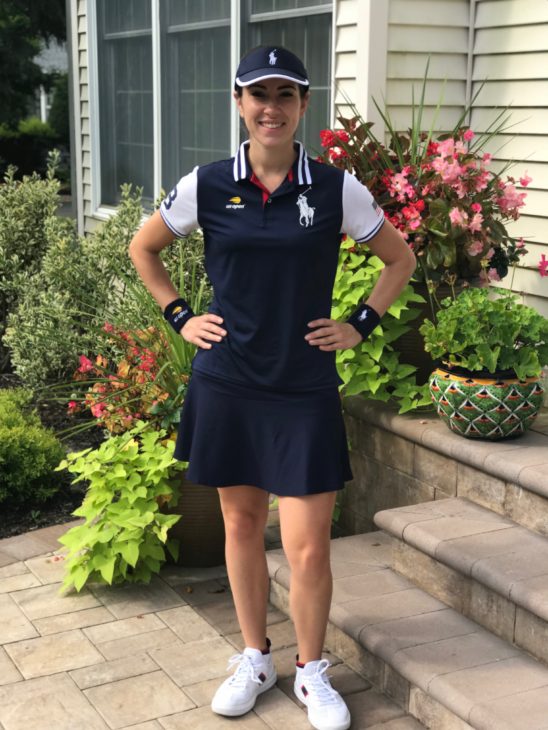
The full uniform package consisted of 2 shirts, 2 skirts/shorts, 2 pairs of socks, 2 wristbands, 2 head pieces (1 visor & 1 hat or 2 hats), 1 pair of sneakers, 1 varsity letterman jacket, and 1 pair of sweatpants. Overall, I really liked the uniform, I think mostly because I looked super cute.
What I liked about the uniform:
-Light and airy
-Easy to move in
-Absorbed sweat
-Cushion on back of socks prevented blisters
-Sophisticated look and design
-Flattering colors
What I disliked about the uniform:
-Sneakers were terribly uncomfortable because they lacked arch support
-The spandex under the shorts didn’t stay in place
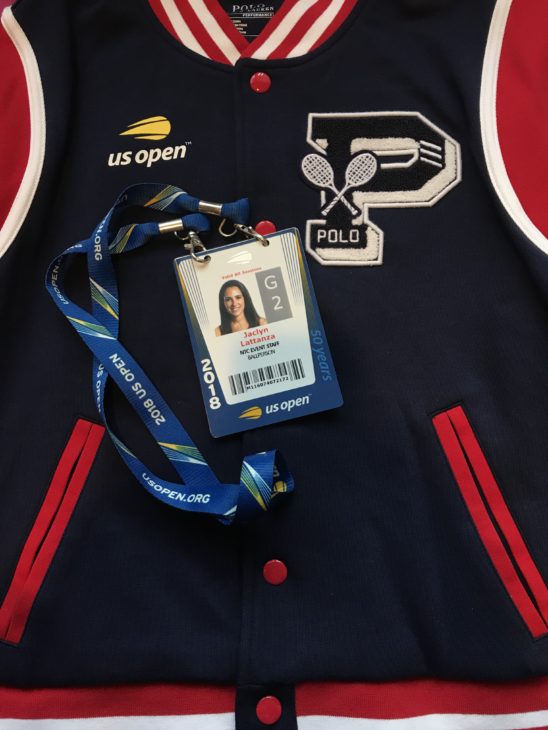
The great thing about the Polo Ralph Lauren uniform design team was that they visited us during the tournament to collect feedback so they can make improvements for future years.
Credential
In order to access the USTA Billie Jean King National Tennis Center, you must have a credential. As a ballperson, your credential not only gives you access to every court, it carries your daily food stipend. Fun Fact: the backside of the credential has a map of the grounds!
FINAL THOUGHTS
My experience as a US Open ballperson is one I’ll never forget. It was the most thrilling and incredible thing I’ve ever done. I am so grateful for being selected to be a part of history and be on the court with some of the most famous tennis players in the world.

I am grateful for being selected to work Ashe, the pit, and final ceremonies; for having access to every court and stadium to watch any match I wanted; for receiving gear from Polo Ralph Lauren; and for meeting some great friends along the way. It was a dream come true.

PIN THIS POST
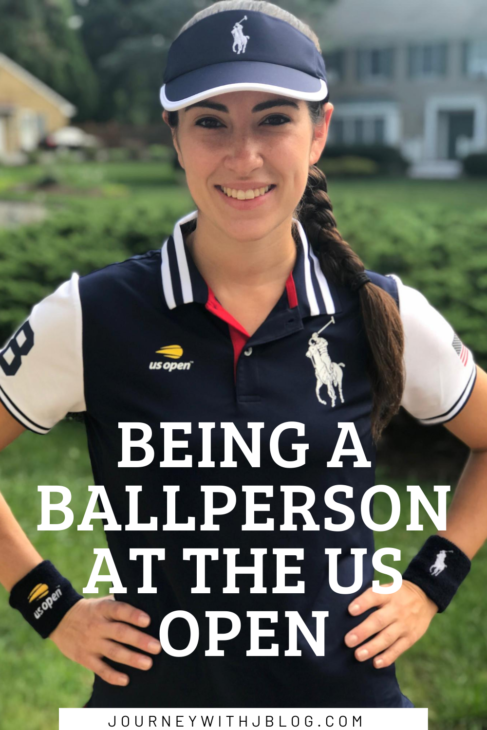
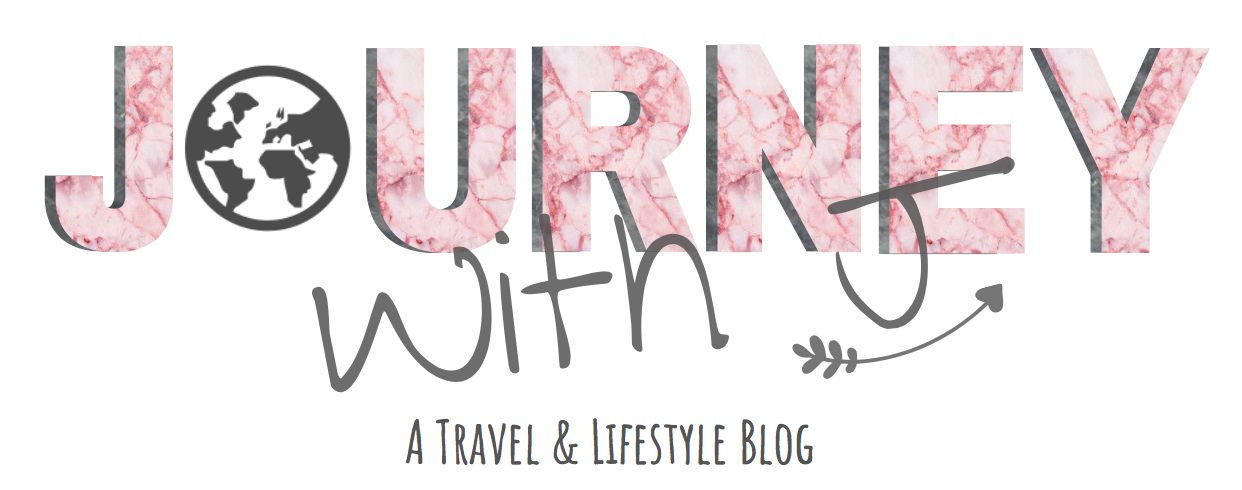
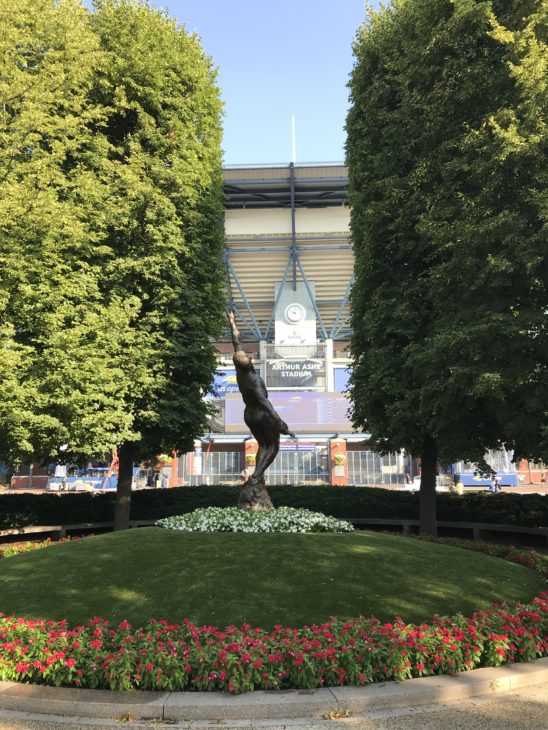
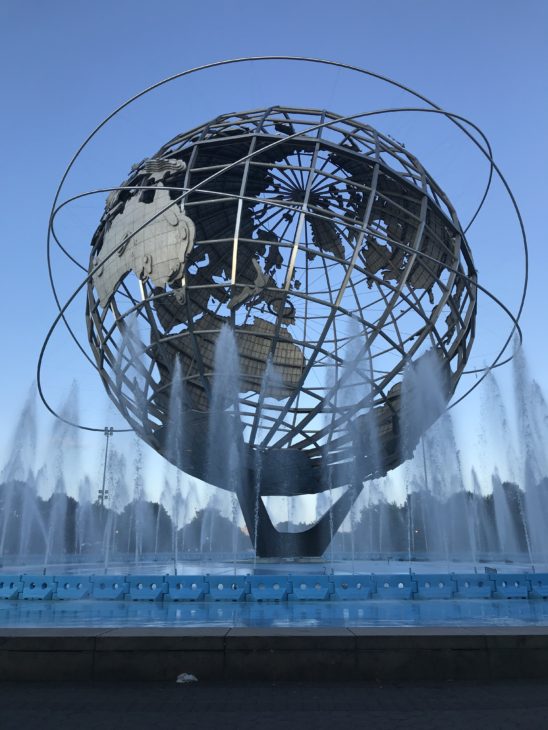
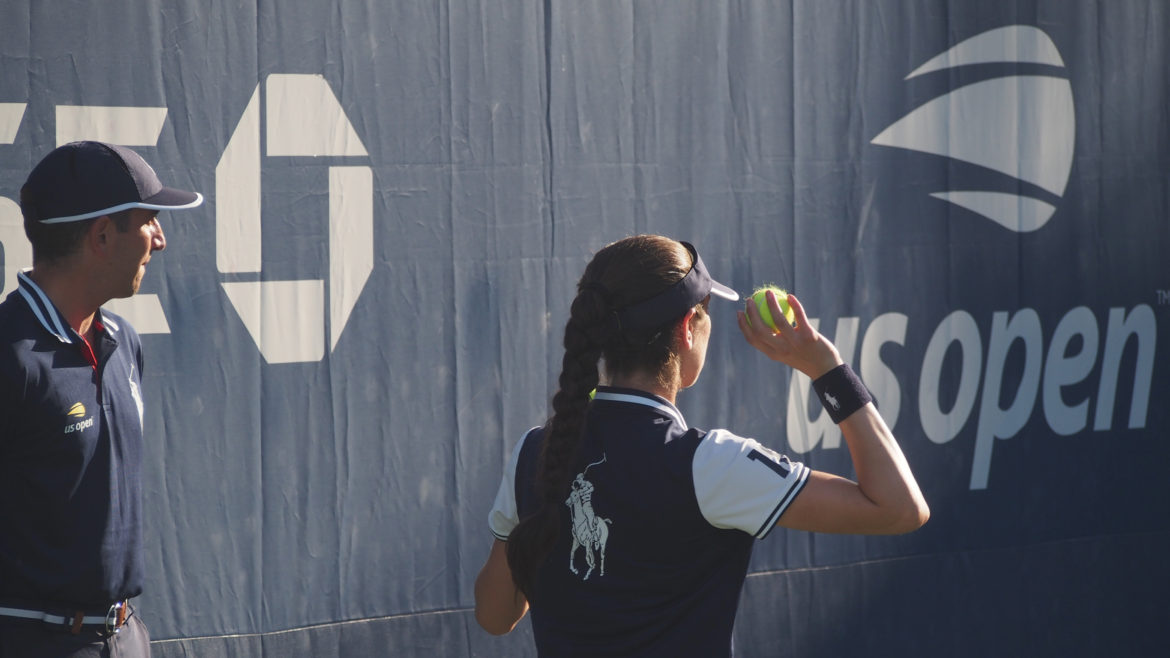
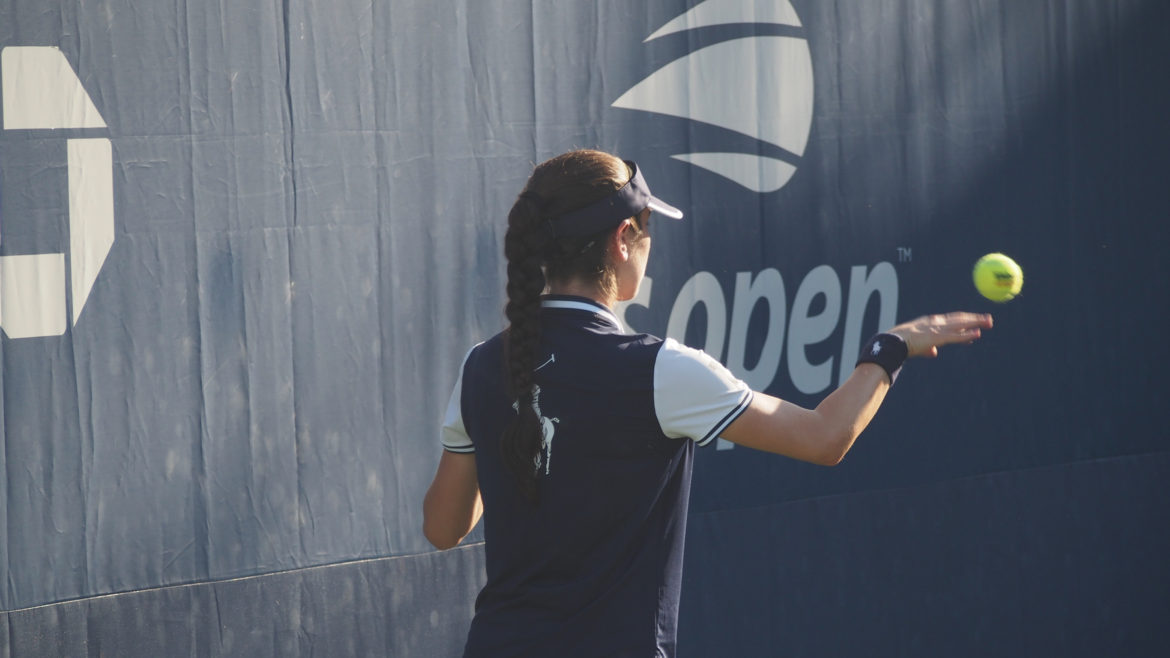
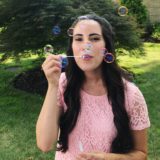


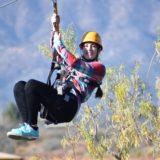
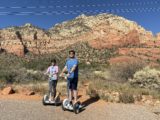

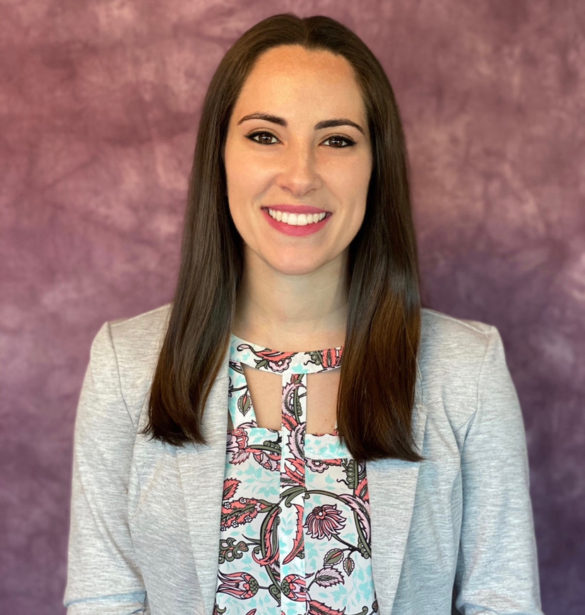
Clazz - An Orcadian Abroad
This is SUCH an amazing experience!!! So glad you’ve shared it! I absolutely love tennis and when I was a kid I would imagine being one of them. I don’t think I’d have the confidence to though! I’d be so scared of messing something up, or dropping a ball or rolling it the wrong way, hahaha. Or accidentally annoying one of the tennis players!
journeywithjblog
It was definitely an experience I’ll NEVER forget! I honestly tried out on a limb, not thinking I’d actually make it. Everyone underwent so many training hours before the tournament started, which really helped with my confidence. When I stepped onto the court for the first time, nerves were still there, but you’d be surprise at how much adrenaline kicks in and takes over. The more court time I got, the more comfortable I felt, but every tennis player is different, so sometimes I was taken off guard. I tried to never take anything too personally.
Denise Lenahan
How exciting! This was a really awesome and super fun post for me and definitely for you. What an experience, I’m so thrilled that you were able to be apart of this.
Truly an unforgettable moment for you for years to come. Thank you for sharing this post and just one thing, don’t ever doubt the Universe’s capability for you. You asked and received. You should check that one off your bucket list for sure ✔😊
journeywithjblog
Thank you so much, Denise! I’m glad you enjoyed reading about my experience. Like you said, it’s truly an unforgettable experience. Crossing it off my bucket list for sure!
Chester
You could definitely see your expertise within the article you write.
The world hopes for more passionate writers like you who aren’t afraid to
mention how they believe. At all times follow your heart.